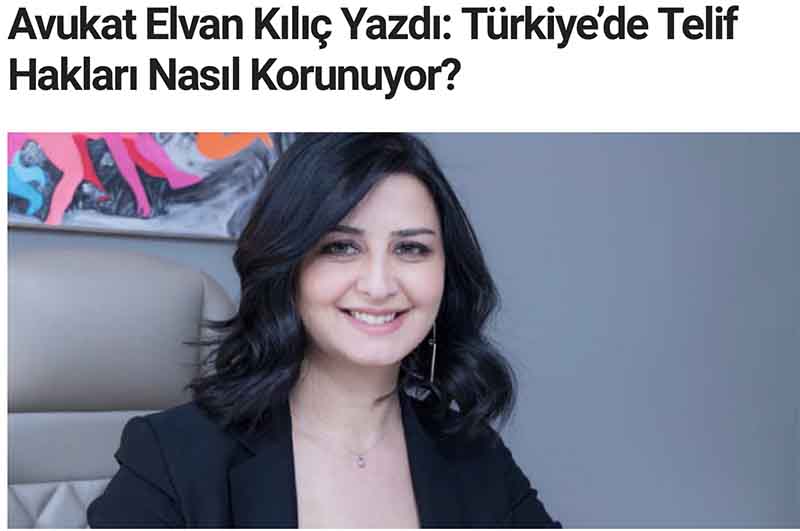
Copyright is the right that serves to protect the owner of all kinds of texts, audio material and ideas that can reach all over the world with a single click with the rapid increase in accessibility in recent years. With a comprehensive definition, the rights of a person who produces intellectual and artistic works are all copyrights and this right is protected on the legal ground.
Countless number of intellectual products have been created since the emergence of humankind. In the antiquity, the author was not taken under protection materially or non-materially, because the general understanding was that "one who owned the origin of something must also own its attachments." With the invention of the printing press, the works began to be reproduced and to reach large masses, and this area, which has become focus of income with the increase in the number of products, led to a need for protection of intellectual rights materially. Although the primary purpose in the process of this need that emerged was to obtain permission from the administrative authorities to print the works, this purpose transformed in time. This process, then, was followed by legal developments. Therefore, by examining the process, I'd like to show the point we have reached.
The first law of intellectual and artistic works that can be accepted is our Copyright Law dated 1910. The reason why there have been so many studies on copyrights recently is that we were too late about protection of intellectual and artistic works until the 20th century. The Law of 1910 was repealed when the Law on Intellectual and Artistic Works no. 5846 entered into force in 1952. Within the scope of our Law on Intellectual and Artistic Works, work includes all kinds of intellectual and artistic products which have the characteristics of their owner and which are considered to be works of science and literature, music, fine arts or cinema. Therefore, for a work to be protected by law, it is expected to be a product of an effort, to carry the characteristics of its owner, and to take shape and fall into one of the work types listed in the law. The owner of the work is the person who benefits from the rights recognized by the laws or will demand to benefit from these opportunities as the person who created the work. The rights of the owner in general are the right to publicize, authority to designate name, the right to prohibit the modification of the work, the rights of the work owner against third parties, the right to process, the right to reproduce, the right to disseminate, the right to representation, and the right to communication to public. These rights may be exercised by the person himself or he himself and his heirs may transfer their financial rights with or without a cost, for a definite period or indefinitely, by following the procedures. The rights to be exercised may be subject to certain exceptions. Rights may be restricted if ideas and works of art contradict the idea of public order and general interest, if there is copy and publicity situation, or if the government has authority within this scope.
It is important to have comprehensive information on the subject matter, since the copyrights that do not require registration to be born, which are protected upon their emergence, are abstract and have protection in accordance with the legislation of the country in which the protection is requested within the scope of “territoriality".
The period of copyright protection is limited to as long as the owner of the work lives and to 70 years after her death. If the owner is a legal person, the protection period starts from the date of publicity and is covered for 70 years from this date. If the owner of the idea and artwork cannot be identified, the rights can be asserted for 70 years with the work gaining publicity. In any case, publicity is essential to assert the right.
If you believe that your copyrights have been violated within the scope of intellectual and artistic works; You can protect your rights on legal basis through penal and civil lawsuits within the scope of violation. Within this scope; if there is violation of any non-material, material and related rights relating to intellectual and artistic works, and any other act of processing, reproduction, alteration, distribution or similar without the written permission of the right holder, if quotation is made from a work without reference, If there is violation of the rules regarding banderole mentioned in the FSEK Article 81 and in case of violation of other rights given by law, criminal proceedings can be initiated by filing a criminal complaint with the prosecutor's office upon the identification of the person or institution that violates the right.
In addition, in case of danger of violation of moral and financial rights, cases of detection and prevention of violation, and compensation cases can be opened.
While claiming pecuniary and non-pecuniary damages; power of the parties, the severity of the event, the benefit gained by the person who caused the violation, the damage suffered by the author and loss of rights is considered to reach a judgment. For this reason, it is important to prove the losses caused by the violation with evidence.
Although it may vary according to its nature, the alleged violation of rights is subject to a one and ten-year statute of limitations as it is considered within the scope of tort. If the violation of financial rights is covered by a criminal offense, the longer statute of limitation applies.
As I mentioned at the beginning of the article, since accessibility is high in today's world, it is important to protect the rights before a substantial situation arises and to get support from a qualified lawyer about the legal process in order not to be too late after a substantial situation arises.